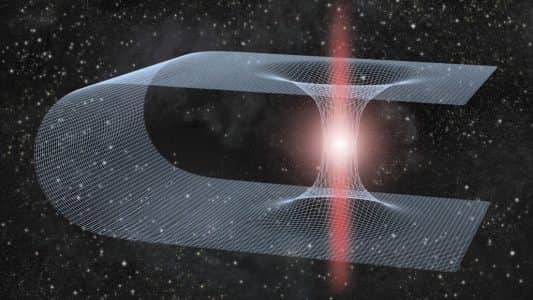Cyclopropenylidene C3H2 found on Titans could be an early sign of life - Dispatch Weekly
October 29, 2020 - Reading time: 4 minutes

NASA scientists are using a massive radio telescope in Chile to discover an unusual molecule in the atmospheres of Titan Saturn’s largest moon. Titan is as big as a dwarf planet. The Cyclopropenylidene C3H2 is the only molecule of its kind in our solar system.
This exciting discovery is the first evidence that identical molecules can form on Titan, a structure that carries the genetic code for life. However, the researchers found evidence that did not suggest that Titan is evidence of life, but rather the result of a chemical reaction between two molecules.
“When I realized I was looking at Cyclopropenylidene, my first thought was, ‘Well, this is really unexpected,” research lead Conor Nixon, a planetary scientist at NASA’s Goddard Space Flight Center, said in a statement.
Titan’s atmosphere exhibits a vast array of chemical processes in this region, and NASA claims it is capable of producing exciting chemical reactions.
Scientists have previously found unusual molecules from star systems in gas clouds, but never in the atmosphere of a planet.
Nixon and his team reported the same observations earlier this month in the Astronomical Journal. Nixon and her colleagues believe they discovered the clue to Cyclopropenylidene by targeting the upper layer of the lunar atmosphere, where C3H2 has fewer gas molecules to cope with.
The full answer appears to have penetrated the upper layers of the lunar atmosphere, where C3H2 interacts with other molecules.
In our solar system, Titan’s atmosphere could even mimic Earth’s, more than any other moon, and there are also rivers and salt reservoirs below the Earth. But its uniqueness has proved to be a treasure trove of new molecules, Nixon said. The planet is being studied by a beefy octocopter drone called Dragonfly from NASA’s Jet Propulsion Laboratory in Pasadena, California.
It is still a rather inhospitable place for life as we know it, but that has not stopped scientists from looking for signs of its existence, as methane is still in the atmosphere, which can trigger a whole range of interesting chemical reactions. The nitrogen-heavy atmosphere is four times as thick as our planet’s and has significantly less gravity than the Earth’s moon.
Is Titan Habitable?
Lopes said scientists wanted to know whether compounds in the atmosphere can reach Titan’s surface and whether the material can pass through the icy crust and into the ocean below. Experts would be trying to find out if Titan is habitable for humans” said Dr. Michael Lopes, a professor of planetary science at the University of California at Berkeley.
Scientists believe Saturn’s moon offers habitable conditions, but there is also something we know about Earth’s climate. We have found a lot of evidence that the Earth is dealing with climate change in a very different way from we are dealing with the Earth, so that is something we have to deal with.
“We’ll be looking for bigger molecules than C3H2 [on Titan], but we need to know what’s happening in the atmosphere to understand the chemical reactions that lead complex organic molecules to form and rain down to the surface,”

DW Staff
David Lintott is the Editor-in-Chief, leading our team of talented freelance journalists. He specializes in covering culture, sport, and society. Originally from the decaying seaside town of Eastbourne, he attributes his insightful world-weariness to his roots in this unique setting.

_1.jpg)


